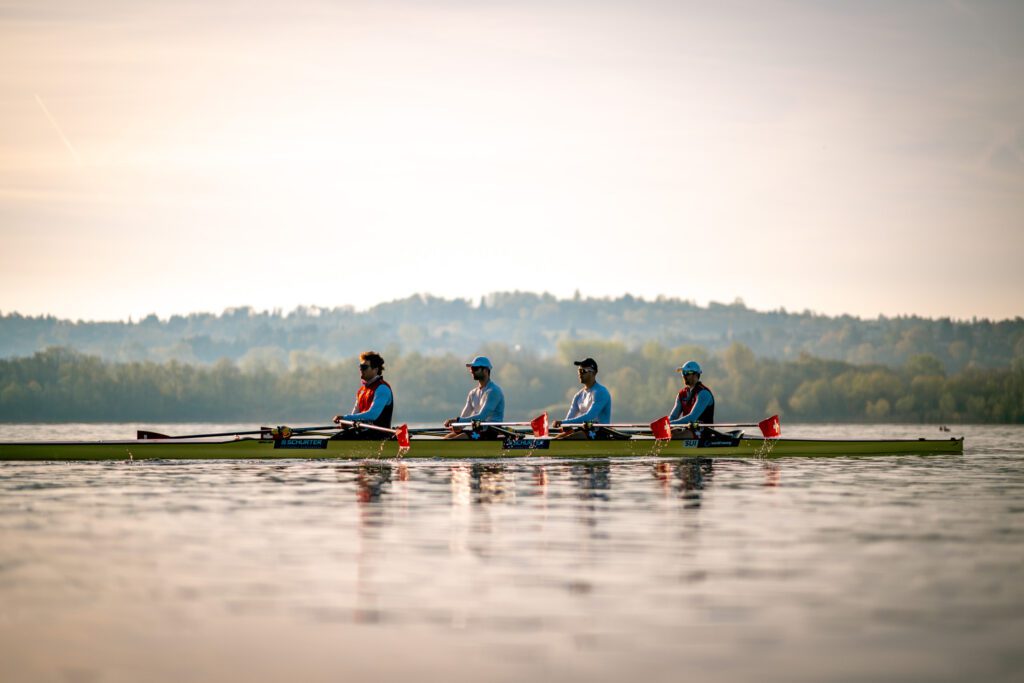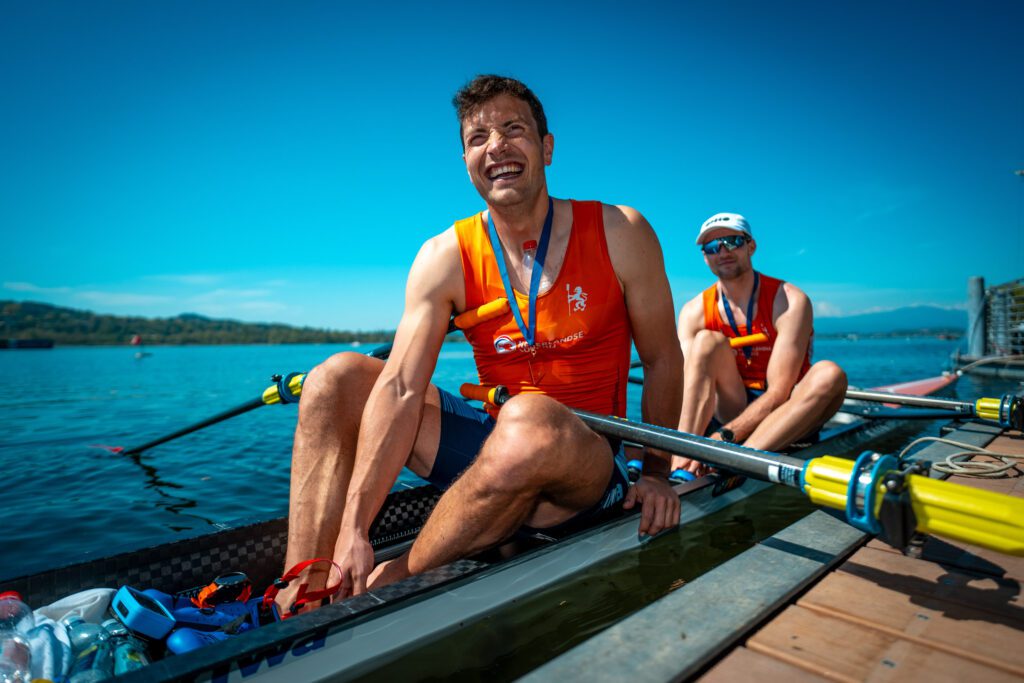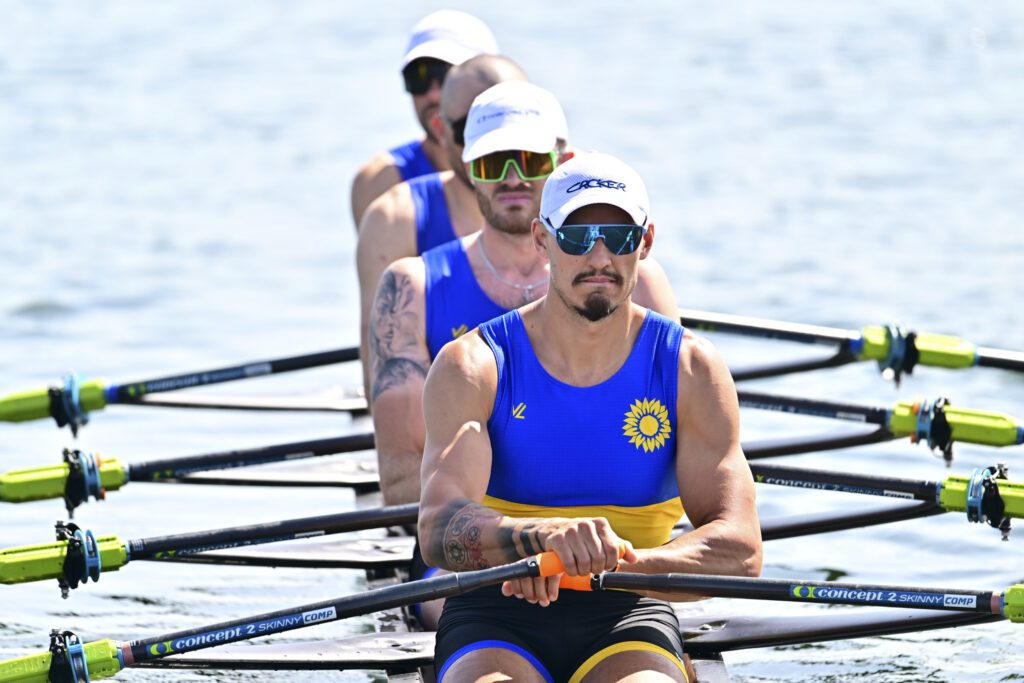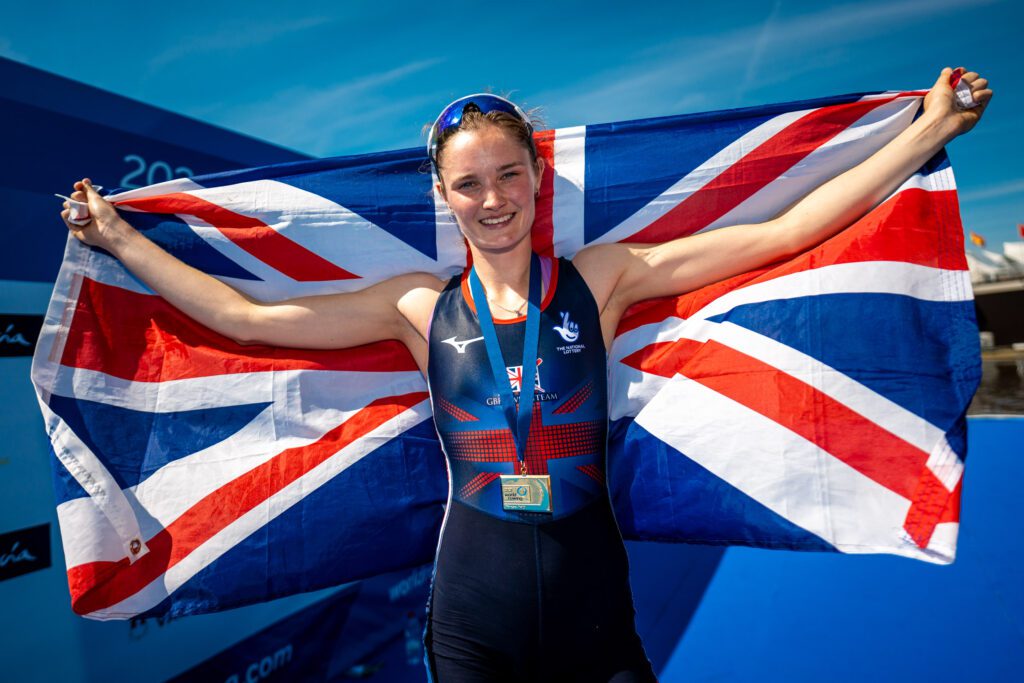The ultimate objective of crew rowing is absolute unity of motion. Daniel James Brown describes it best in The Boys in the Boat: Nine Americans and Their Epic Quest for Gold at the 1936 Berlin Olympics, “All were merged into one smoothly working machine; they were in fact, a poem of motion, a symphony of swinging blades”. It is hard enough when everyone in the boat is the same gender, weight, age and ability, but when you mix those variables up a bit you get even more of a challenge. And yet, a range of “mixed” teams is on the rise not just in rowing, but across many sports.
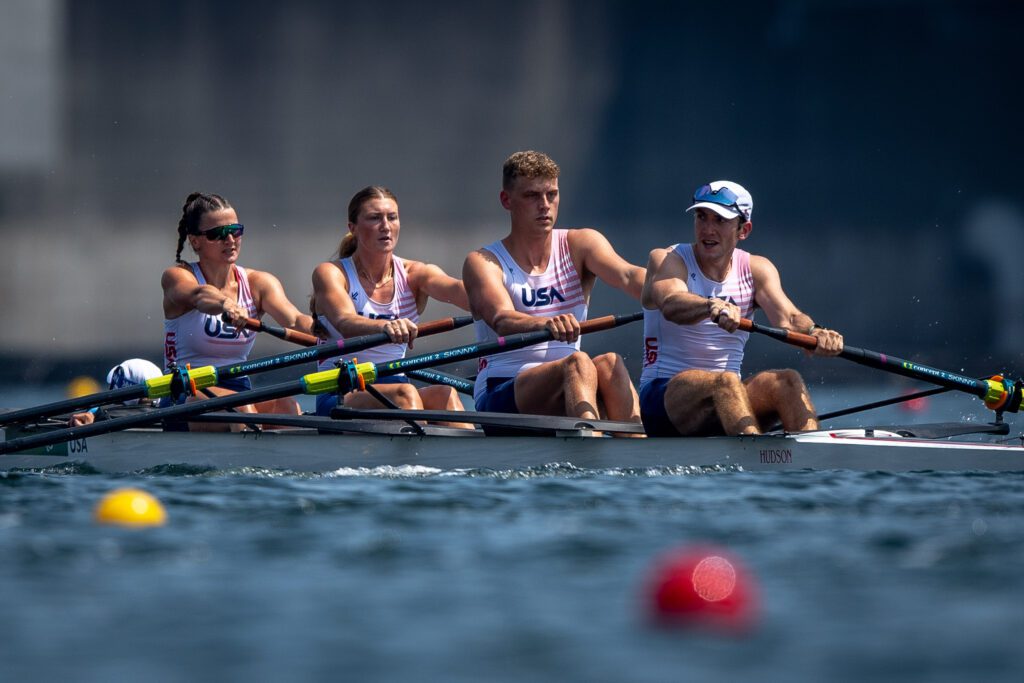
Photo USA PR3 Mix4+ Tokyo 2020
Credit Benedict Tufnell
Tokyo 2020 Games introduced a slew of new mixed events. There were 18 mixed-gender events across archery, athletics, badminton, equestrian, judo, sailing, shooting, swimming, table tennis, tennis and triathlon. Guardian writer Tumaini Carayol described them as “deeply entertaining” and felt they offered “a completely new dynamic to racing formats that have been around for so long”.
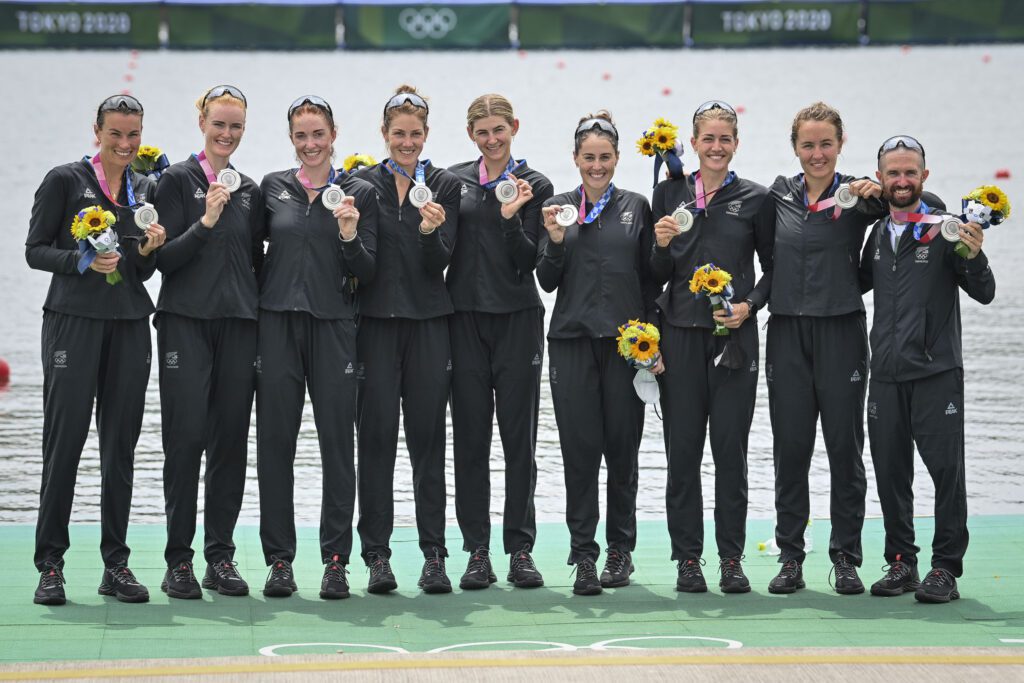
Photo NZL W8+ Tokyo 2020
Credit Steve MacArthur
Many sports have histories of excluding women so mixed-gender competitions are a big step. Tennis was a trailblazer, it introduced Mixed Doubles Tennis to Olympic competition at the second ever modern Olympic Games in Paris 1900 and added it to the sport’s grand event, Wimbledon, in 1913. Mixed doubles goes back to the 1870s and had a major impact on women in sport as described in the International Journal of Sport, “[Tennis] was one of the first sports in which men and women not only participated in near equal numbers, but also actually played together. Thus, the sport served an emancipatory function for women and lawn tennis can be considered ‘contested terrain’ where notions of ‘female appropriate’ physical activities were both challenged and reinforced.”
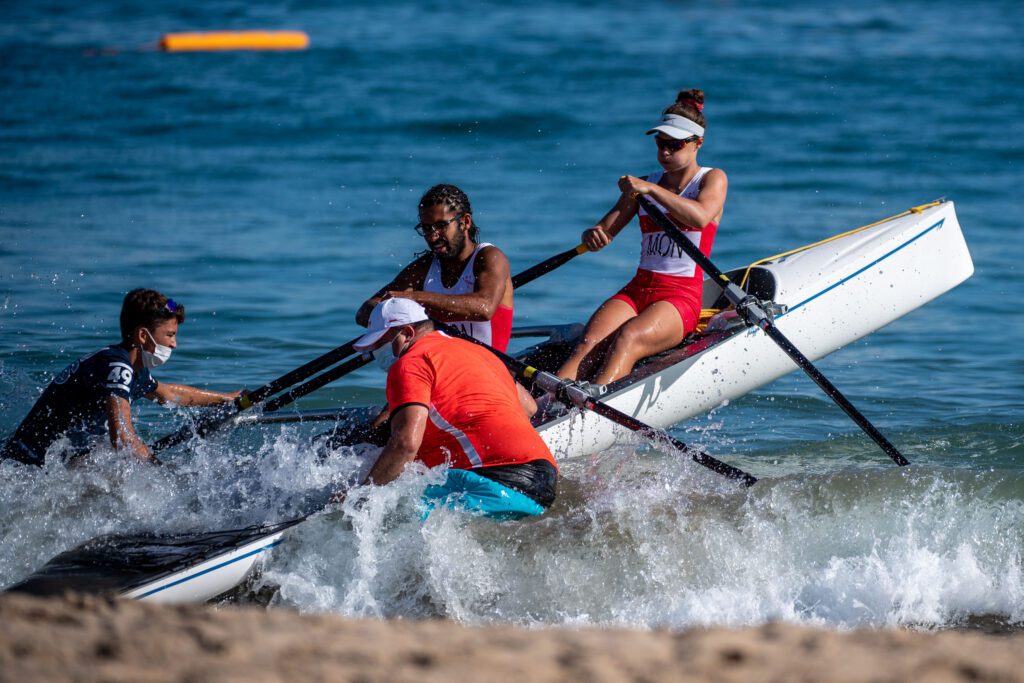
Photo Antoine Bordero and Clara Stefanelli of Monaco in the CMix2x at 2021 World Rowing Beach Sprints in Oeiras, Portugal.
Credit Benedict Tufnell
Arguably rowing was an early pioneer as men and women rowed together in skiffs in the late 1800s. Mixed crews were reportedly a regular feature for the Kingston-Upon-Thames Skiff Club founded in 1895, and were included in the Skiff Championships in 1897. More recently, pararowing was one of the first Paralympic sports to introduce the mixed gender format (cycling introduced them in 1996). The PR2 2x and the PR3 4+ events are both mixed which means the majority of Paralympic rowers compete in mixed gender races. These mixed gender formats have been a part of the Paralympic Regatta since its inception at the 2008 Beijing Games. Mixed racing made its way to the hallowed Henley Royal Regatta (HRR) in 2019 with the 100 year anniversary of the King’s Cup competition. The centennial reboot of this historic race featured mixed eights (minimum of two female athletes in each boat) of armed forces competitors from 8 countries. Mixed events are a regular feature at the annual World Masters Regatta and at World Rowing’s coastal events – the Junior Mixed Double Sculls will make its debut at the Youth Olympic Games originally scheduled for 2022 but now set for Dakar, Senegal in 2026.
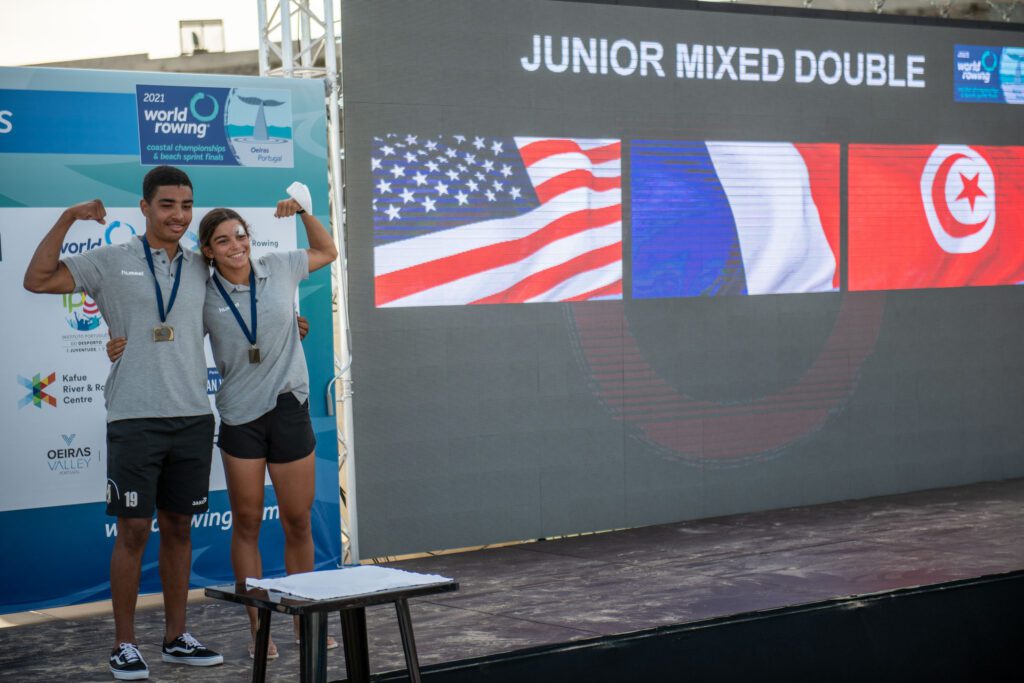
Photo Bilel Frigui and Hela Belhaje Mohamed of the Tunisia CJMix2x celebrate at 2021 World Rowing Beach Sprints in Oeiras, Portugal.
Credit Benedict Tufnell
Although there are currently no mixed-gender rowing crews at the Olympics, Caleb Shepherd created history at Tokyo 2020 as the first man to win an Olympic medal in the women’s eights. Shepherd coxed the New Zealand women’s eight to their nation’s first Olympic medal in the women’s eights. And Eline Berger who coxed the Dutch men’s eight was the first woman to cox an Olympic men’s eight. These records came about after a small but significant change to World Rowing’s rules of racing in early 2017. The amendment read: “The gender of the coxswain shall be open so that a men’s crew may be coxed by a woman and a women’s crew by a man.” Sam Bosworth, with the New Zealand women’s eight, became the first man to steer a women’s crew to international gold, winning at 2017 World Rowing Cup II in Poznan. A year later, the Australians followed suit by selecting female cox Kendall Brodie to their heavyweight men’s eight while James Rook took the helm of the Australian women’s eight.
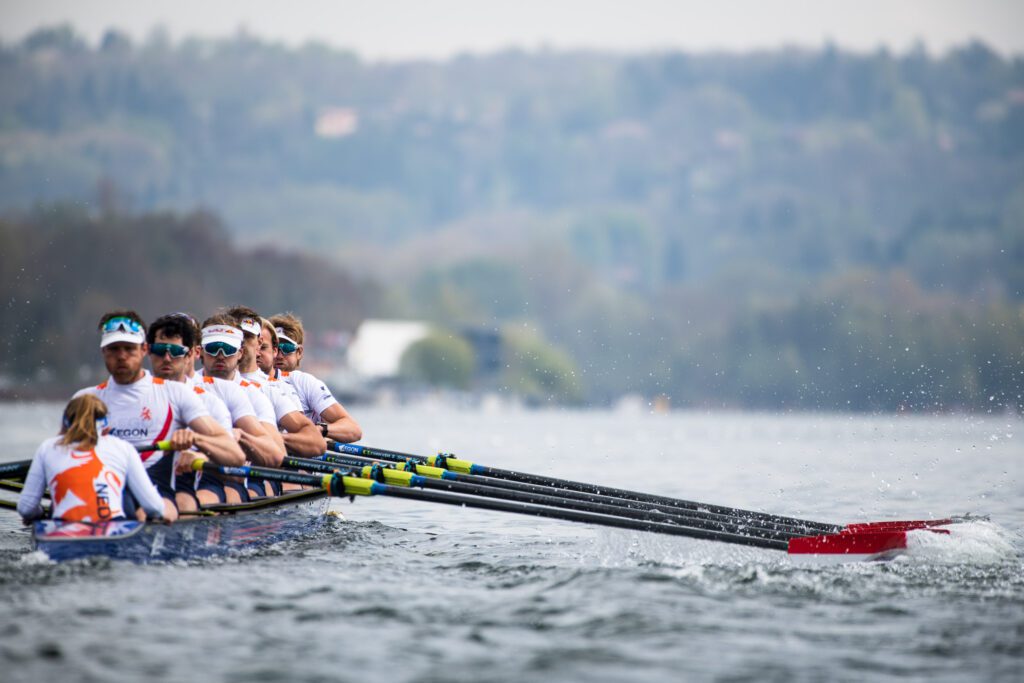
Photo NED M8+
Credit Benedict Tufnell
While the label “mixed” in rowing specifically refers to a gender combination, the general concept of “mixed” boats is expanding to a range of inclusive formats. In fact, when it comes to mixing disabled and able-bodied athletes, rowing is leading the way. The world’s biggest regatta, the Head of the Charles, introduced the “Inclusive Double” event in 2016 (after featuring it as an exhibition event in 2015). The UK adaptive rowing community introduced its version called the “Supported Adaptive Double” in 2017, and it is now the most popular adaptive event in UK rowing competition.
Supported rowing first started with visually impaired rowers being partnered with sighted rowers. Sighted rowers steer from the bowseat while following the rhythm set by their visually impaired teammates in front. Other athletes with impairments also benefitted from in-boat support such as learning disabled (LD) individuals who struggled with steering, and acutely weak or unsteady individuals who had trouble moving or controlling a boat by themselves. Another prominent segment of supported rowing is one-arm rowers. The “Supported Adaptive 2-” is a double scull boat where a person with only one arm sculls with that arm and the support rower sculls with only one scull on the other side. Essentially a “Pair” format, but using sculling blades (instead of sweep oars) so they can be managed by a single hand.
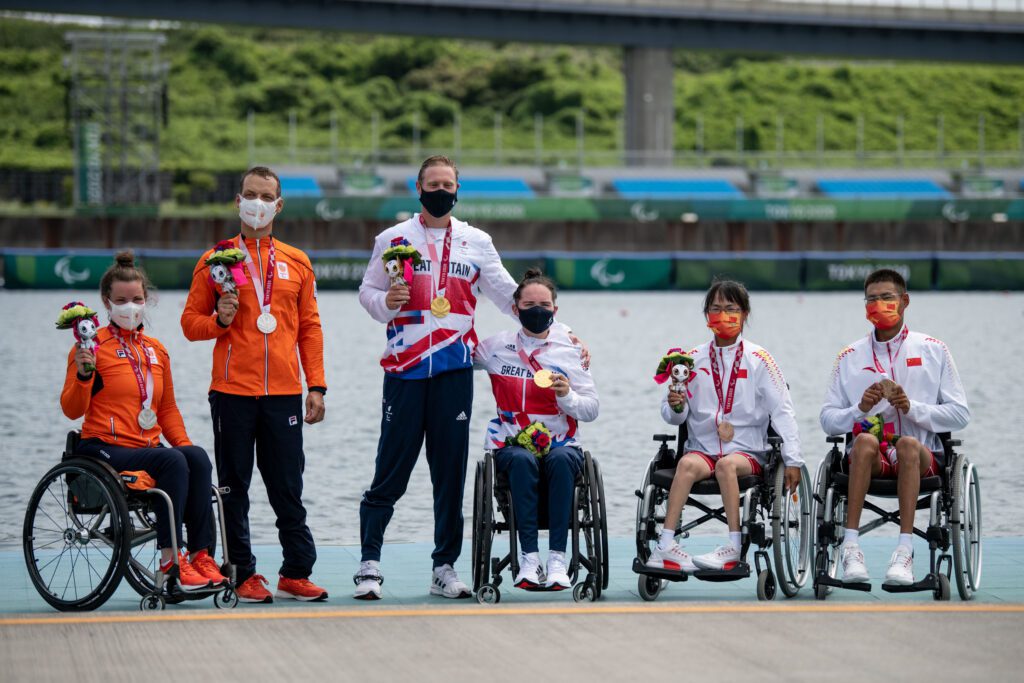
Photo Tokyo 2020 Paralympic Games PR2 Mix2x medal winners on the podium at Sea Forest Waterway, Tokyo, Japan.
Credit Benedict Tufnell
One of the pioneers of this format, Marlow RC’s Steve Pickin, came to some surprising new insights while Support rowing. Steve said, “Rowing one-handed with Kirsty has been one of the most educational things I have done rowing and has benefited my regular rowing hugely. You have to disregard all the conventional wisdom you have been taught about rowing over the years and really re-examine what makes the boat move from the ground up.” Many individuals have embraced the inclusive format as an opportunity to extend the range of rowing possibilities and partners.
One of the challenges of mixing competitor types is trying to produce fair competition match-ups between comparable athletes. Many sports have long had classifications of age, weight, disability and, of course gender. The challenge is that the more discrete you get in defining these classifications, the smaller the population of athletes you have to draw from. As a result, filling competition draws for the more granular classifications becomes difficult. For example, it’s hard to find enough Junior PR2 girls within a reasonable driving radius to fill a race card.
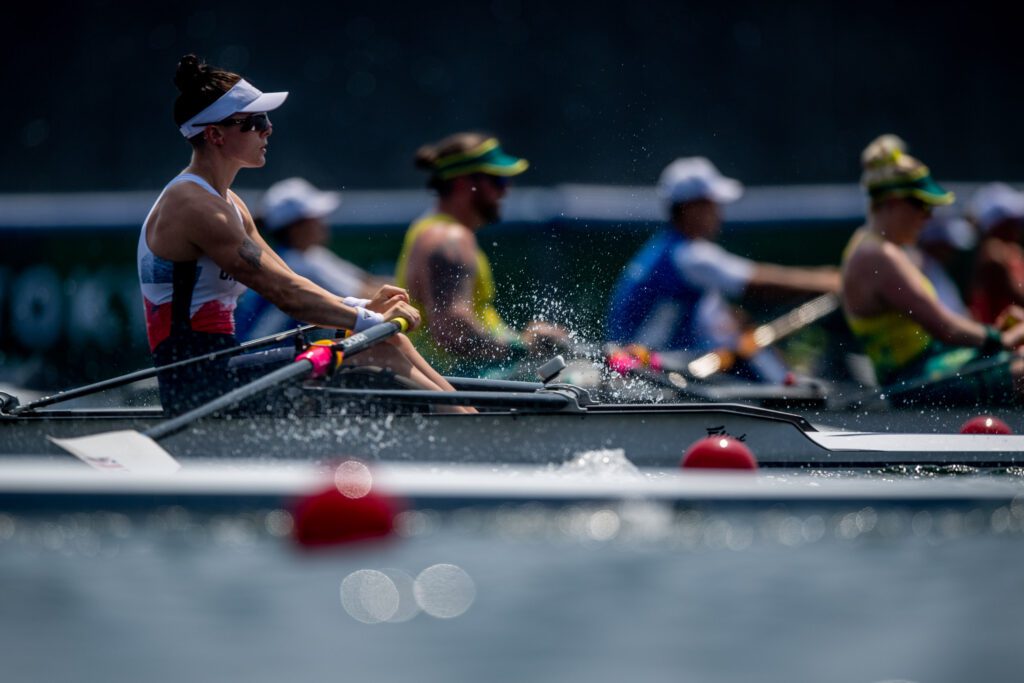
Photo GBR PR2 Mix2x stroke Lauren Rowles.
Credit Benedict Tufnell
To resolve the level-playing-field issue, the UK adaptive community introduced a Time Handicap system which operates much like the notion of “Handicaps” in the sport of golf. Each athlete (or inclusive crew) has a 500m time recorded in a national database (for one’s first race, the coach is expected to submit a time). This 500m time is then used to determine racing start handicaps that operate like the Veteran handicaps. Rather than a set time allowance for classification (eg. 5 seconds for every 5 years of age), the allowance is specific to the individual athlete/crew (like golf). With this approach a junior PR3 woman can compete against a senior PR1 man. If the handicaps are accurate, the race should be tight. In fact, adaptive racing in the UK has developed a reputation for being some of the most exciting because of this alignment. In competition, the majority of adaptive race finishes are within a canvas.
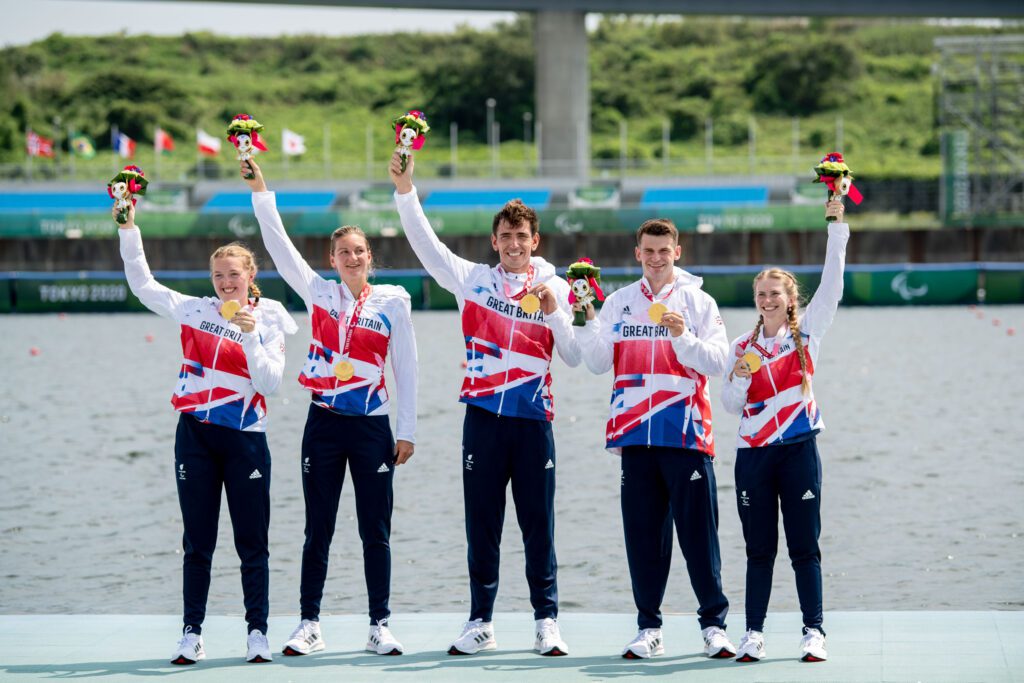
Photo Tokyo 2020 GBR PR3 Mix4+
Credit Benedict Tufnell
Supported formats and time handicapping are two prominent ways that the sport of rowing is leading the way in inclusive competition. The International Mixed Ability Sports (IMAS) organization promotes an even more expansive vision of inclusion. Beyond the FISA pararowing (“PR”) classifications and the other broader classifications (eg. “AR” adaptive rowing and “IR” indoor rowing which add impairments like cognitive conditions), Mixed Ability goes even further by including non-permanent conditions (eg. injury recovery), and non-acute conditions (eg. autistic spectrum disorder). In fact, it doesn’t specify any ability or disability distinctions. Instead, it shifts the ethos to one of individual consideration and comprehensive inclusion. Not surprisingly, two of IMAS’ three “Ambassadors” are high profile leaders from the rowing community: world champion and former head of British Rowing Anne Marie-Phelps and British Paralympic champion Ellie Buttrick.
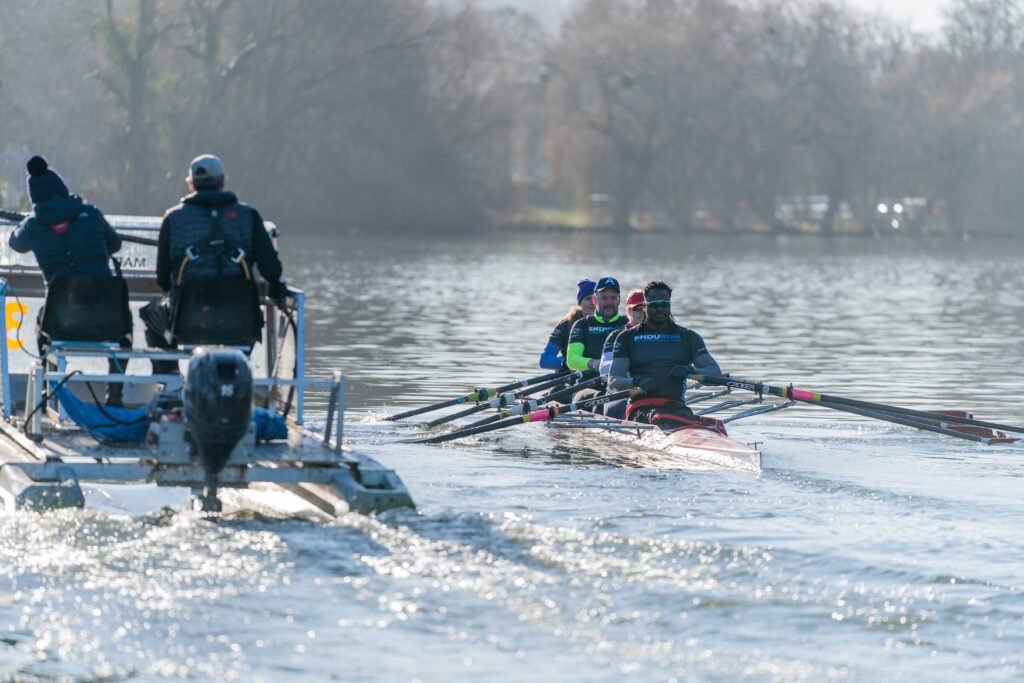
Photo Kingsley Ijomah, Naomi Riches, Steven Dowd, Cath Bishop coached by Bruce Lynn at Marlow Rowing Club.
Credit AllMarkOne
Mixing and matching are increasingly standard fare for adaptive rowing, and its appeal is growing across the sport. If you are looking for something different perhaps it is time to consider casting the net for potential crew-mates more widely. Let’s mix it up!
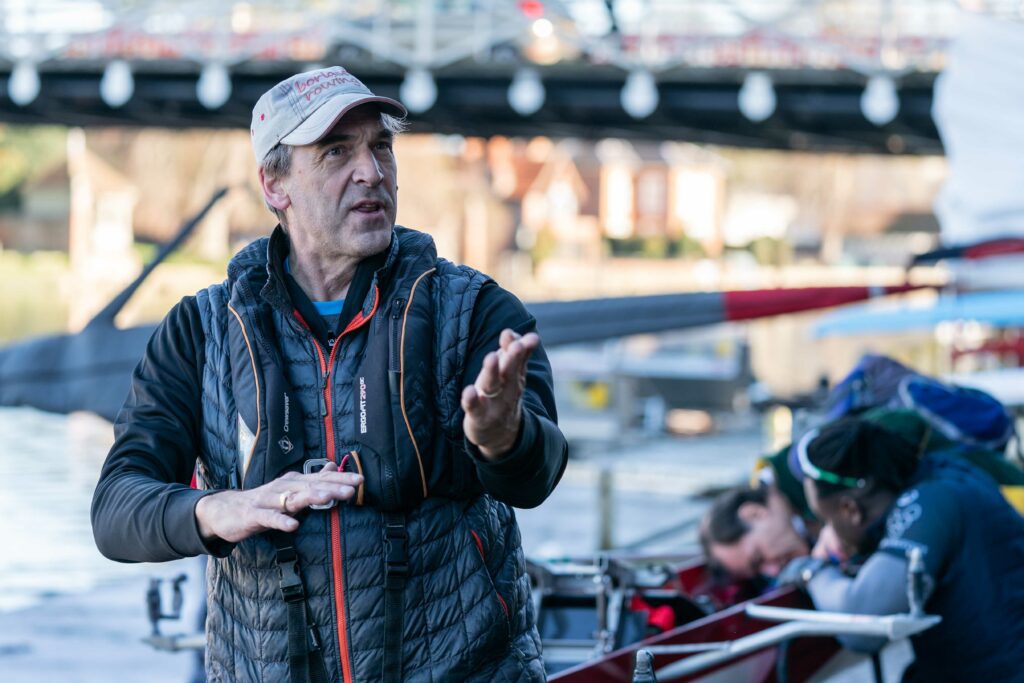
Photo Coach Bruce Lynn
Credit AllMarkOne
Bruce Lynn is a volunteer coach and coordinator at Marlow Rowing Club and is the webmaster of AdaptiveRowingUK.
